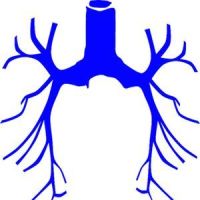A recent systematic review and meta-analysis of noninvasive ventilation (NIV) for acute lung injury (ALI) or respiratory failure found that adult patients treated with NIV had a substantially lower intubation rate, shorter ICU stay, and lower hospital mortality compared with those using standard oxygen therapy.
Xiaoli Xu, MD, of the Department of Infection Management, Jinling Hospital, Medical School of Nanjing University, China and colleagues analysed 17 studies published between 2000 and 2015 that randomised adult patients treated for acute lung injury respiratory failure (11886 patients: treatment group 960 patients; control 926 cases). The study is published in Heart & Lung.
Other outcomes studied were length of hospital stay and ICU mortality where no difference was found between NIV and standard therapy. The researchers note that there was high heterogeneity across the studies of intubation rate. They suggest that types of acute respiratory failure might be a source of heterogeneity. Their subgroup analysis showed that NIV did not improve the outcomes of patients who developed acute respiratory failure after extubation.
The authors note that while use of NIV is growing, the effect of NIV remains controversial. They write that their results suggest that NIV is effective for ALI in reducing the intubation rate, hospital mortality and length of ICU stay compared to standard oxygen therapy.
Results
Intubation rate: 8 trials studied the differences in intubation rate. The overall estimates of intubation rate (RR = 0.58, [95% CI: 0.44, 0.77]) indicated that NIV would decrease the intubation rate for patients with acute respiratory failure compared to the controls.
Subgroup analysis of intubation rate: RR
Length of ICU stay and Length of Hospital Stay: 10 trials
Subgroup analysis: weight mean difference (WMD) of ICU stay in NIV group vs control group
The pooled WMD 1.42 (95% CI: 3.38, 0.55, P = 0.16) showed that the length of hospital stay in the NIV group was comparable to that of the control group.
Mortality: RR
NIV had a statistically significant lower ICU mortality than the standard
treatment (RR = 0.73, [95% CI: 0.47, 1.15]; P = 0.18).
Subgroup analysis: NIV vs control
The researchers note that the studies included in their analysis had relatively small sample size (20-183). They point out that due to this, different disease background might contribute to large bias for the meta-analysis.
Image credit: Wikimedia Commons
Xiaoli Xu, MD, of the Department of Infection Management, Jinling Hospital, Medical School of Nanjing University, China and colleagues analysed 17 studies published between 2000 and 2015 that randomised adult patients treated for acute lung injury respiratory failure (11886 patients: treatment group 960 patients; control 926 cases). The study is published in Heart & Lung.
Other outcomes studied were length of hospital stay and ICU mortality where no difference was found between NIV and standard therapy. The researchers note that there was high heterogeneity across the studies of intubation rate. They suggest that types of acute respiratory failure might be a source of heterogeneity. Their subgroup analysis showed that NIV did not improve the outcomes of patients who developed acute respiratory failure after extubation.
The authors note that while use of NIV is growing, the effect of NIV remains controversial. They write that their results suggest that NIV is effective for ALI in reducing the intubation rate, hospital mortality and length of ICU stay compared to standard oxygen therapy.
Results
Intubation rate: 8 trials studied the differences in intubation rate. The overall estimates of intubation rate (RR = 0.58, [95% CI: 0.44, 0.77]) indicated that NIV would decrease the intubation rate for patients with acute respiratory failure compared to the controls.
Subgroup analysis of intubation rate: RR
- acute respiratory failure 0.63 [95% CI: 0.46, 0.85]
- postoperative acute respiratory failure 0.23 [95% CI: 0.14, 0.39]
- postextubation acute respiratory failure 0.97 [95% CI: 0.69, 1.36]
Length of ICU stay and Length of Hospital Stay: 10 trials
Subgroup analysis: weight mean difference (WMD) of ICU stay in NIV group vs control group
- acute respiratory failure 1.44 [95% CI: 2.70, 0.18]
- postoperative acute respiratory failure 1.31 [95% CI: 2.14, 0.47]
- postextubation acute respiratory failure 0.74 [95% CI: 3.61, 2.12]
The pooled WMD 1.42 (95% CI: 3.38, 0.55, P = 0.16) showed that the length of hospital stay in the NIV group was comparable to that of the control group.
Mortality: RR
NIV had a statistically significant lower ICU mortality than the standard
treatment (RR = 0.73, [95% CI: 0.47, 1.15]; P = 0.18).
Subgroup analysis: NIV vs control
- acute respiratory failure 0.67 [95% CI: 0.39, 1.15]
- postoperative acute respiratory failure 0.40 [95% CI: 0.15, 1.07]
- postextubation acute respiratory failure 1.14 [95% CI: 0.43, 3.00]
The researchers note that the studies included in their analysis had relatively small sample size (20-183). They point out that due to this, different disease background might contribute to large bias for the meta-analysis.
Image credit: Wikimedia Commons
References:
Xu X, Yuan B, Liang Q, Hu J, Shi Z, Huang H, Fang H, Sheng X, Nie N, Yin X (2016) Noninvasive ventilation for acute lung injury a meta-analysis of randomized controlled trials. Heart Lung, 45(3):249-57. doi: 10.1016/j.hrtlng.2016.02.005.
Latest Articles
Noninvasive, Ventilation, Lung, Acute lung injury, ALI, NIV, Noninvasive ventilation
A recent systematic review and meta-analysis of noninvasive ventilation (NIV) for acute lung injury (ALI) or respiratory failure found that adult patients treated with NIV had a substantially lower intubation rate, shorter ICU stay, and lower hospital mor



























